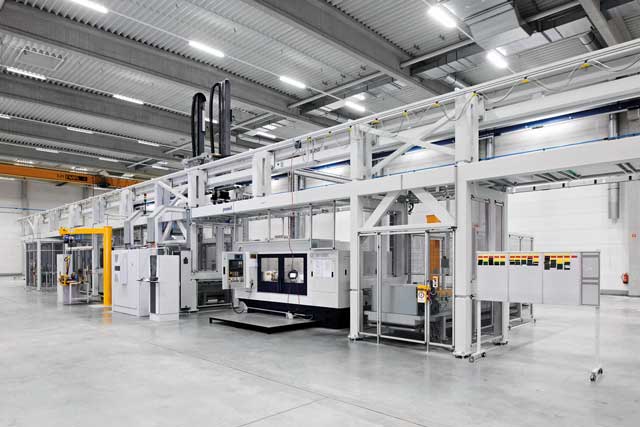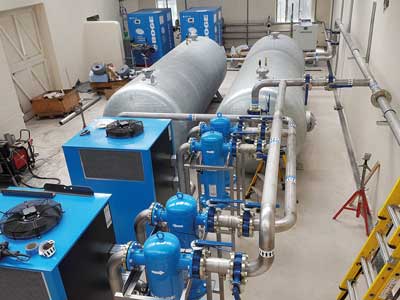
Heat from your industrial air compressor could help meet your heating needs, save on energy bills and reduce carbon emissions, says Mark Whitmore, general manager of compressed air specialist Boge.
In recent years, great progress has been made in improving the energy efficiency of air compression systems. Much of it has focused on optimising system performance, using programmable logic controller technology, and minimising leakage. Meanwhile, relatively little attention has been given to heat recovery – yet this may hold potential for similar energy and cost savings.

Your compressor as a heat source
Almost all the electrical energy fed into an air compressor is converted into heat. With the right equipment, over 90% can be recovered and put to work elsewhere. Otherwise, you are paying to produce that compressor heat, then paying for cooling systems to remove it, and then paying again to power separate heating facilities.
Take the case of an air-cooled, oil-injected rotary screw compressor, which is one of the most common types. Around 72% of the heat loss is from its oil cooler, 13% from its compressed air after-cooler and 9% from its electric motor. These losses, adding up to 94% of the heat produced, are all recoverable.
When transferred to other parts of the building, in the form of hot air or hot water, this heat can serve a variety of useful purposes. Importantly, efficient heat recovery systems are now widely available not just for new compressors but as retrofit kits for older set-ups.
Harness ‘free’ hot air and water
Recovery of compressor heat as hot air is perhaps the simplest approach. Hot air is expelled through the top of the unit in many compressor designs. With the addition of HVAC ductwork and controls, it can easily be channelled to another location.
Space heating is an obvious application, although in the warmer months it may be necessary to redirect the hot air outdoors. It can also be used in warm air curtains for insulation. Its drying properties can be employed in various industrial processes, including provision of dry air for paint spraying, and regeneration of desiccant dryers. Another role may be pre-heating combustion air for boilers.
Hot water, obtained using heat exchange equipment, is in many ways a more versatile product of heat recovery. It is commonly collected through a plate heat exchanger which brings hot oil in pipes from the compressor into close contact with water pipes.
This alternative is ideal for hot-water-based central heating and for supplying hot water to bathrooms and washrooms. It will provide heating to meet a multitude of industrial needs, including steam generation, laundry, cleaning, electroplating, galvanising and chemical processing. Food and beverage production is one of many other sectors whose processes require heat, and hot water can even power heat-driven chillers.
Recovered heat might not entirely remove the need for conventional heating equipment but it will certainly reduce it. For example, warming up the water fed to a boiler will save on the amount of energy needed to raise it to maximum temperature.
Weigh up the savings
Ideal applications for recovered heat are those whose demand is constant through the year, although control systems can switch uses seasonally. Larger and more intensively used compressors tend to give the best return on investment in heat recovery. A heat recovery system provider will advise on how much you could save, based on your compressor’s type, capacity, motor rating and average operating hours
Further information: +44 (0) 14 84 719921;
https://uk.boge.com/en

